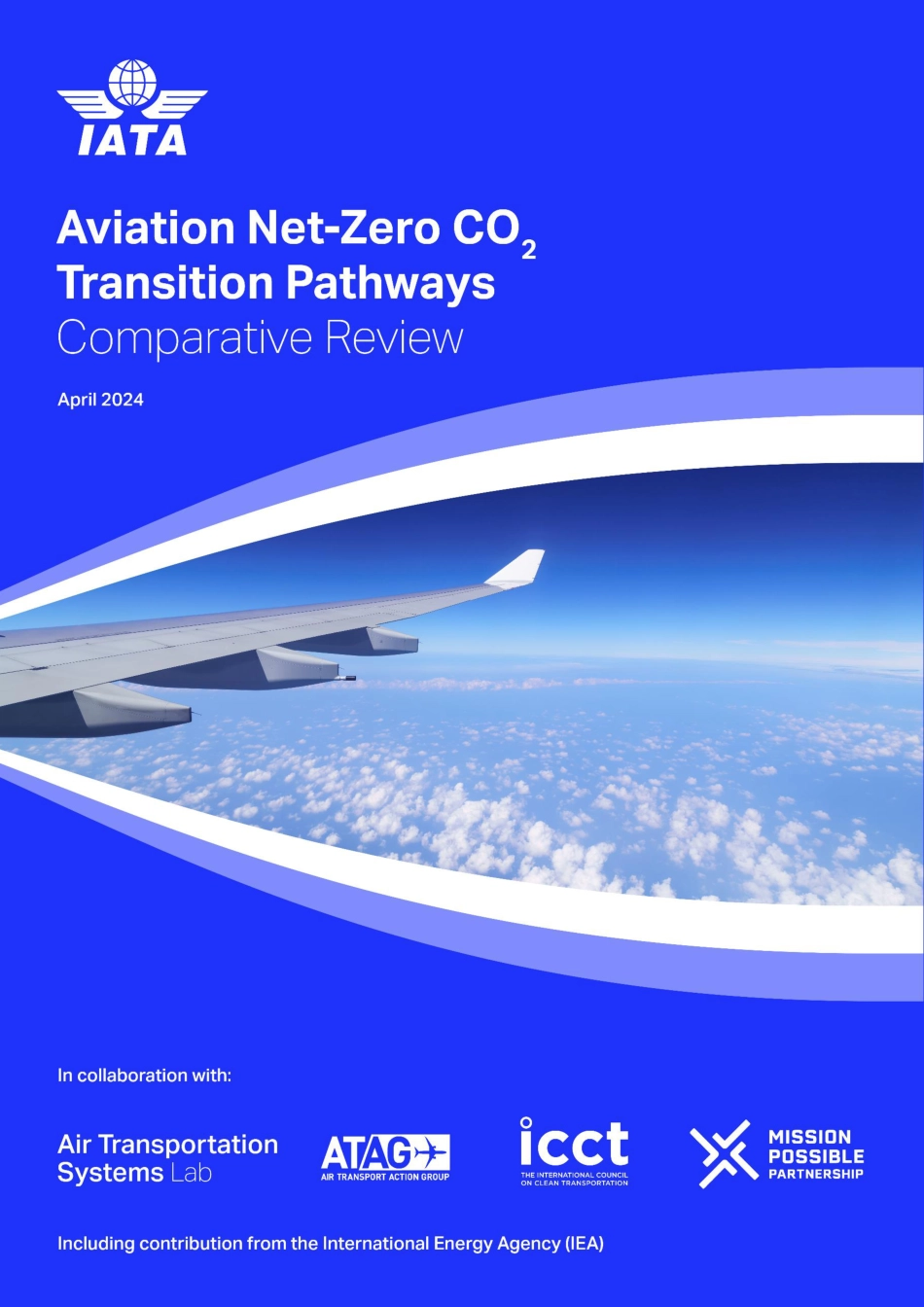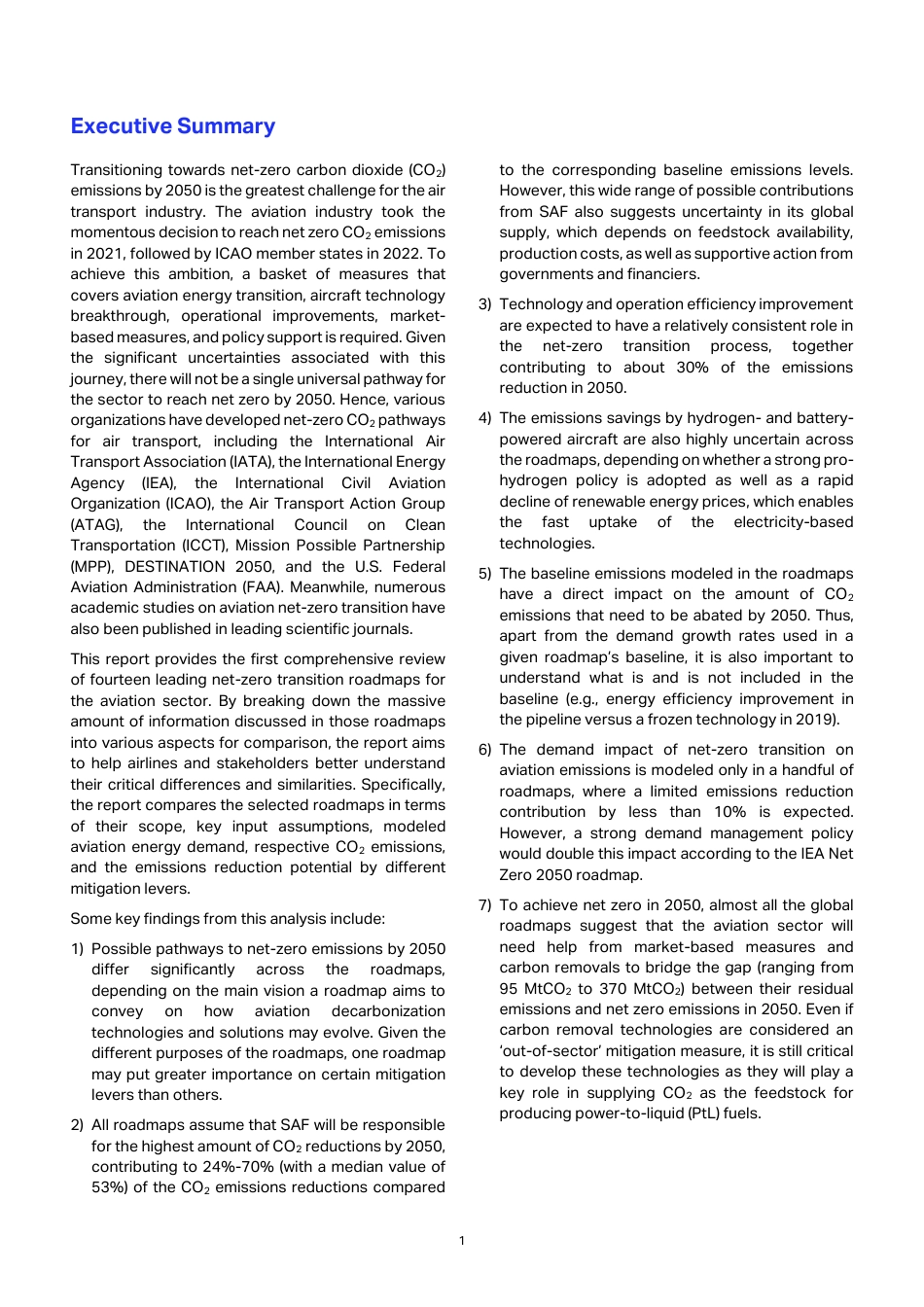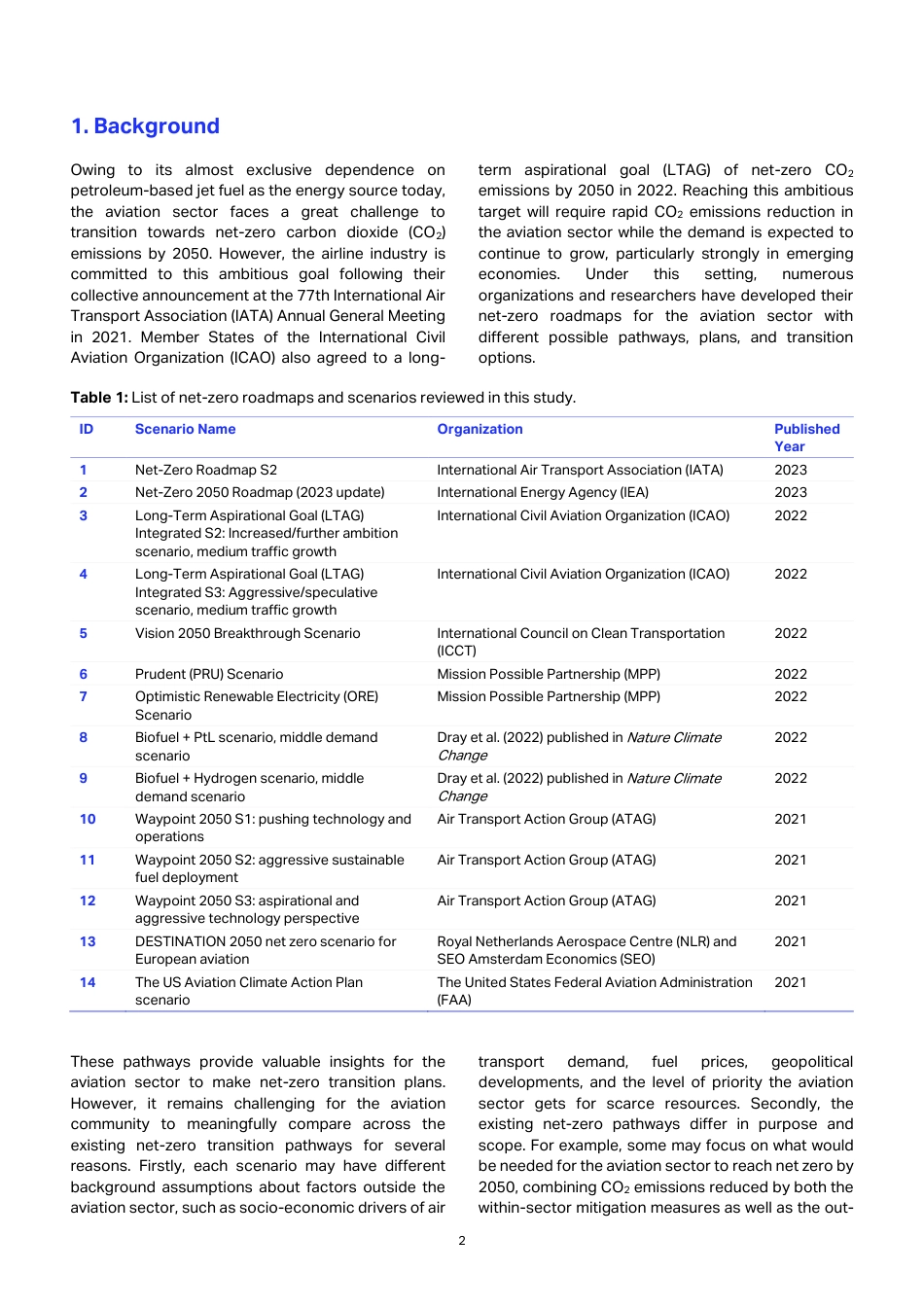11ExecutiveSummaryTransitioningtowardsnet-zerocarbondioxide(CO2)emissionsby2050isthegreatestchallengefortheairtransportindustry.TheaviationindustrytookthemomentousdecisiontoreachnetzeroCO2emissionsin2021,followedbyICAOmemberstatesin2022.Toachievethisambition,abasketofmeasuresthatcoversaviationenergytransition,aircrafttechnologybreakthrough,operationalimprovements,market-basedmeasures,andpolicysupportisrequired.Giventhesignificantuncertaintiesassociatedwiththisjourney,therewillnotbeasingleuniversalpathwayforthesectortoreachnetzeroby2050.Hence,variousorganizationshavedevelopednet-zeroCO2pathwaysforairtransport,includingtheInternationalAirTransportAssociation(IATA),theInternationalEnergyAgency(IEA),theInternationalCivilAviationOrganization(ICAO),theAirTransportActionGroup(ATAG),theInternationalCouncilonCleanTransportation(ICCT),MissionPossiblePartnership(MPP),DESTINATION2050,andtheU.S.FederalAviationAdministration(FAA).Meanwhile,numerousacademicstudiesonaviationnet-zerotransitionhavealsobeenpublishedinleadingscientificjournals.Thisreportprovidesthefirstcomprehensivereviewoffourteenleadingnet-zerotransitionroadmapsfortheaviationsector.Bybreakingdownthemassiveamountofinformationdiscussedinthoseroadmapsintovariousaspectsforcomparison,thereportaimstohelpairlinesandstakeholdersbetterunderstandtheircriticaldifferencesandsimilarities.Specifically,thereportcomparestheselectedroadmapsintermsoftheirscope,keyinputassumptions,modeledaviationenergydemand,respectiveCO2emissions,andtheemissionsreductionpotentialbydifferentmitigationlevers.Somekeyfindingsfromthisanalysisinclude:1)Possiblepathwaystonet-zeroemissionsby2050differsignificantlyacrosstheroadmaps,dependingonthemainvisionaroadmapaimstoconveyonhowaviationdecarbonizationtechnologiesandsolutionsmayevolve.Giventhedifferentpurposesoftheroadmaps,oneroadmapmayputgreaterimportanceoncertainmitigationleversthanothers.2)AllroadmapsassumethatSAFwillberesponsibleforthehighestamountofCO2reductionsby2050,contributingto24%-70%(withamedianvalueof53%)oftheCO2emissionsreductionscomparedtothecorrespondingbaselineemissionslevels.However,thiswiderangeofpossiblecontributionsfromSAFalsosuggestsuncertaintyinitsglobalsupply,whichdependsonfeedstockavailability,productioncosts,aswellassupportiveactionfromgovernmentsandfinanciers.3)Technologyandoperationefficiencyimprovementareexpectedtohavearelativelyconsistentroleinthenet-zerotransitionprocess,togethercontributingtoabout30%oftheemissionsreductionin2050.4)Theemissionssavingsbyhydrogen-andbattery-poweredaircraftarealsohighlyuncertainacrosstheroadmaps,dependingonwhetherastrongpro-hydrogenpolicyisadoptedaswellasarapiddeclineofrenewableenergyprices,whichenablesthefastuptakeoftheelectricity-basedtechnologies.5)ThebaselineemissionsmodeledintheroadmapshaveadirectimpactontheamountofCO2emissionsthatneedtobeabatedby2050.Thus,apartfromthedemandgrowthratesusedinagivenroadmap’sbaseline,itisalsoimportanttounderstandwhatisandisnotincludedinthebaseline(e.g.,energyefficiencyimprovementinthepipelineversusafrozentechnologyin2019).6)Thedemandimpactofnet-zerotransitiononaviationemissionsismodeledonlyinahandfulofroadmaps,wherealimitedemissionsreductioncontributionbylessthan10%isexpected.However,astrongdemandmanagementpolicywoulddoublethisimpactaccordingtotheIEANetZero2050roadmap.7)Toachievenetzeroin2050,almostalltheglobalroadma...



 VIP
VIP VIP
VIP VIP
VIP VIP
VIP VIP
VIP VIP
VIP VIP
VIP VIP
VIP VIP
VIP VIP
VIP